Northern Cardinal, Range, Facts, Habitat, Image, Winter, Characteristics, Sound
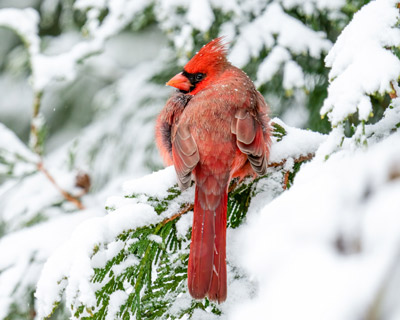
The Northern Cardinal (Cardinalis cardinalis) is a familiar sight in many parts of North America. The male is a striking bird with bright red plumage and a crest on its head. The female is a duller brown colour, but still has the crest and a red patch on the wings. Both sexes have a thick, conical bill and a distinctive black mask around the eyes.
HABITAT
Cardinals are found in a variety of habitats, including woodlands, thickets, and suburban gardens. They are year-round residents in most of their range and do not migrate. They are known for their loud, clear calls and songs, which can often be heard throughout the year.
DIET
The diet of Northern Cardinals consists mainly of seeds and fruits, with some insects and other small invertebrates also taken. They are known to feed on a wide variety of seeds, including sunflower, safflower, millet, and thistle, as well as fruits such as berries and grapes. They are also known to feed on insects, including caterpillars, beetles, and grasshoppers.
BEHAVIOR
Cardinals are also known for their highly territorial behaviour, especially during the breeding season. The male will defend its territory from other males and will often engage in physical fights. The female will also defend the nest and the surrounding area from potential predators.
REPRODUCTION
The Northern Cardinal is typically monogamous, meaning that the male and female will pair up and breed together for one season. The female will build a cup-shaped nest made of twigs, grass, and other plant material, usually in a thicket or low tree. The female will lay 3-4 eggs, which she will incubate for about two weeks. Both parents will help care for the young, which will fledge (leave the nest) in about 10-12 days.
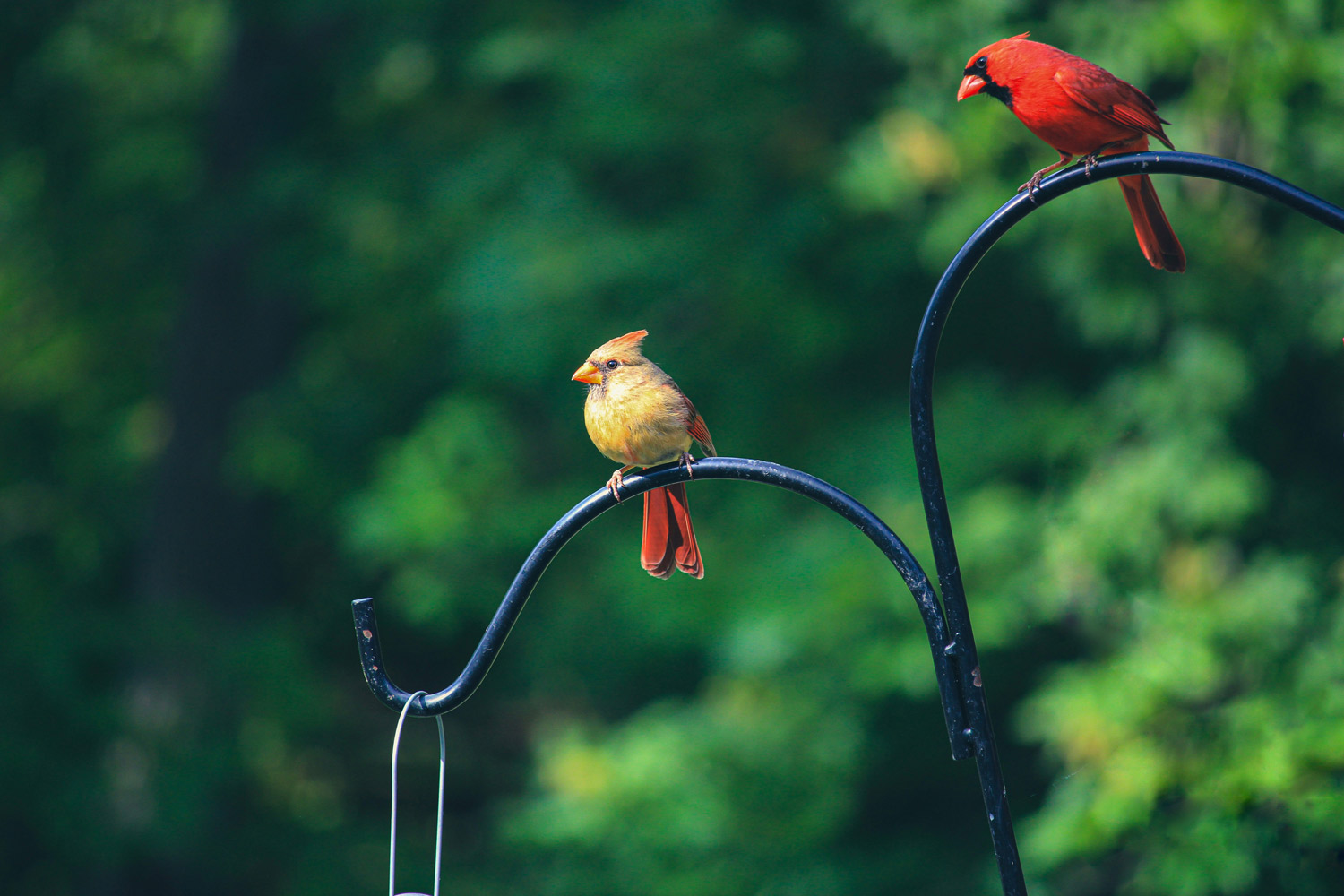
The Northern Cardinal is a species of Least Concern to the International Union for Conservation of Nature (IUCN), meaning that it is not considered to be in danger of extinction. However, the population of Northern Cardinals in some areas may be declining due to habitat loss and degradation.
SYMBOLISM
In many parts of the United States, the Northern Cardinal is a popular backyard bird and a symbol of strength and resilience often featured on state bird lists. Even more, it is considered a sign of good luck and is also deeply rooted in the cultural and religious practices of many communities in North America.
Overall, the Northern Cardinal is a brightly coloured and well-known bird that is found throughout much of North America. Its striking plumage, loud call, and bold behaviour make it a favourite among birdwatchers and backyard birders alike.
The Northern Cardinal has also been the subject of several studies on its behaviour and ecology. One interesting aspect of its behaviour is its preference for certain types of food. Studies have shown that cardinals prefer certain types of seeds and fruits over others, and they are also known to be able to recognize the presence of certain types of insects.
SOCIAL STRUCTURE
Another aspect of its behaviour is its social structure. Cardinals are known to form long-term pair bonds, and both males and females will defend their territories from other birds. In addition, both sexes are involved in the care of the young, with the male bringing food to the female and helping to feed the chicks.
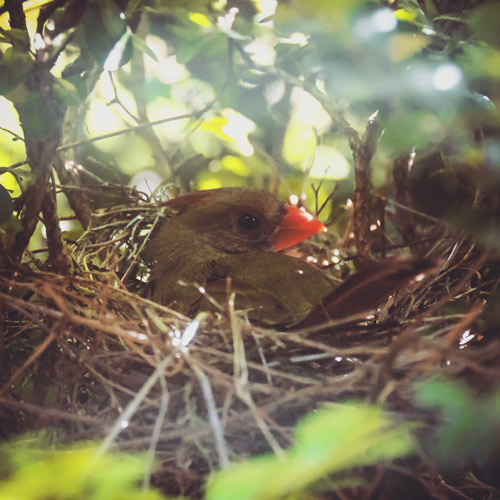
USING TOOLS
Cardinals have also been observed engaging in behaviours that are not typically seen in other bird species. Some examples include cardinals using tools, such as using a twig to extract insects from a crevice or using a small stick to rake seeds out of a feeder.
VOCALIZATION
The Northern Cardinal is also known for its unique vocalizations. The male has a loud and distinctive song, which he uses to defend his territory and attract a mate. The female also has a distinctive call, which is used to communicate with her mate and her young. In addition, both sexes will give alarm calls when they sense danger.
Conservation efforts for Northern Cardinal include the protection of its natural habitat, enhancement of feeding and nesting opportunities in urban and suburban areas, and public education and awareness campaigns to decrease bird-window collisions.
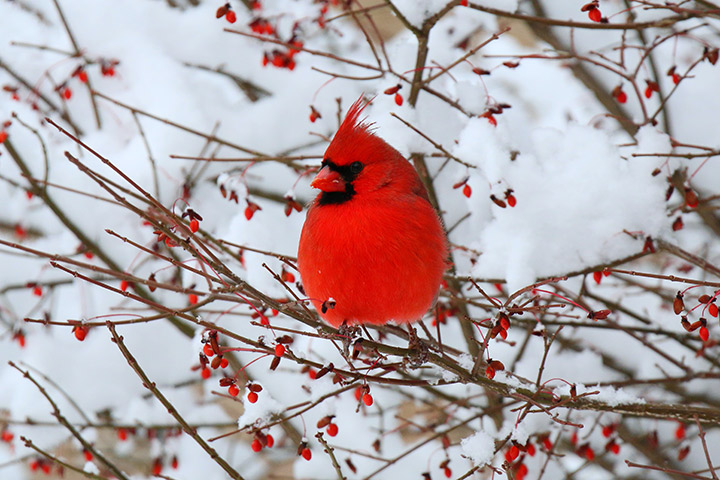
POPULARITY
In addition to its popularity among birdwatchers and backyard birders, the Northern Cardinal has also been an important species in culture and art. Its striking red plumage and crest have made it a popular subject in paintings, photographs, and sculptures. The Northern Cardinal also has been adopted as a state bird for several states, including Illinois, Indiana, Kentucky, North Carolina, Ohio, and Virginia.
The Northern Cardinal is also featured on various merchandise and as a mascot for various sports teams such as the St. Louis Cardinals, a baseball team.
Overall, the Northern Cardinal is not only an important species ecologically, but also culturally and aesthetically. This bird has captured the hearts of people and inspired them through art and sports. its resilience and adaptability have allowed it to thrive in urban and suburban areas, making it a common sight for many people. Conservation efforts and education campaigns are essential to maintain this species and its habitat for future generations to enjoy.
IMPORTANT ROLE
Another important aspect of the Northern Cardinal is its role in the ecosystem. They act as seed dispersers, helping to distribute the seeds of various plants throughout their range. They also play a role in controlling insect populations by foraging for insects, especially in the summer when the young are being raised.
Cardinals are also known to host a variety of ectoparasites on them, such as feather lice and mites. these ectoparasites can often be used as an indicator of population and habitat health, in addition to providing food for other avian and invertebrate species.
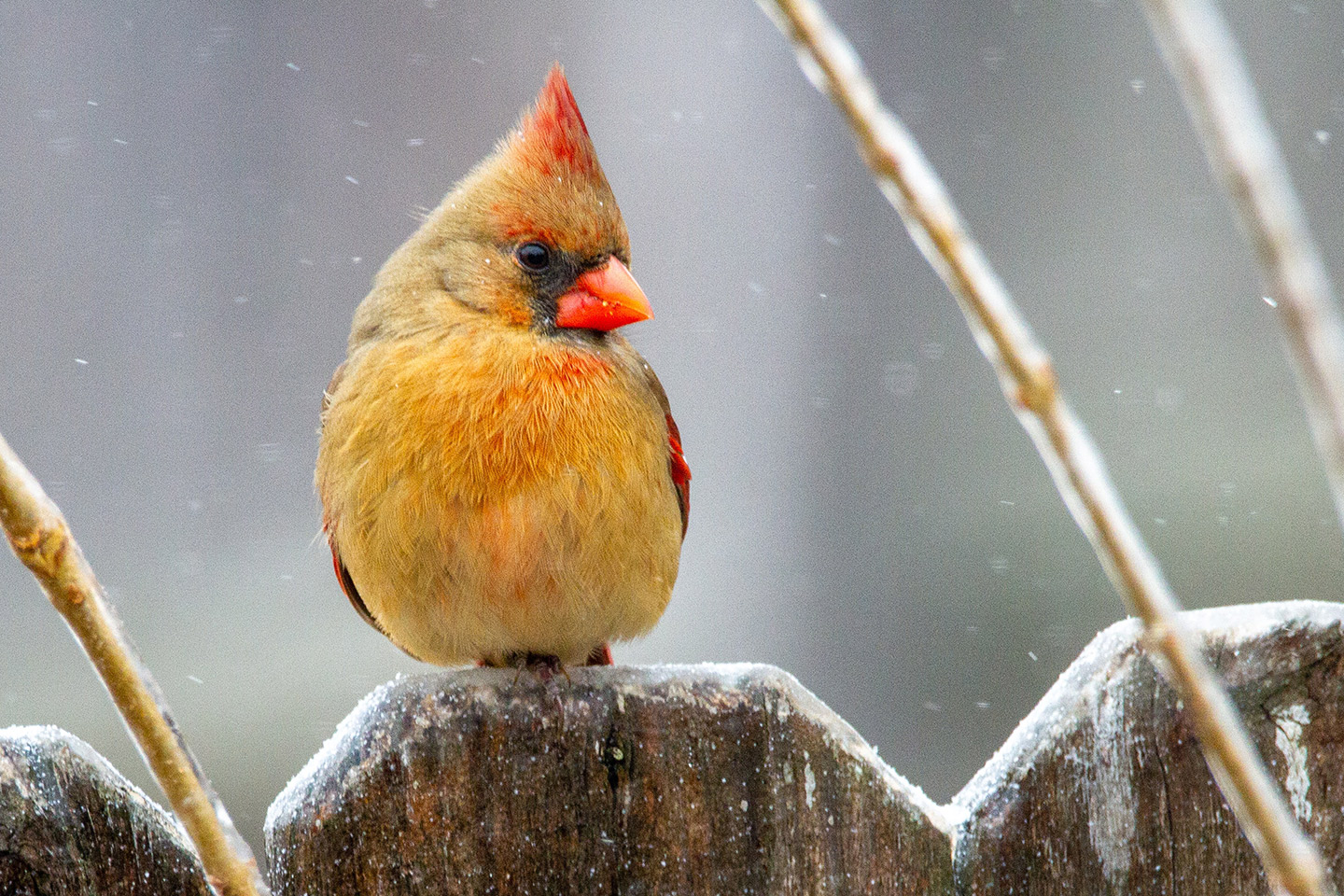
IMPACT OF HUMAN ACTIVITIES
While they are not considered threatened species, their populations in certain areas may be impacted by human activities such as habitat destruction, fragmentation and degradation, pesticide use and collisions with windows, which can cause mortality.
CONSERVATION
Many organizations and conservation groups are working to protect Northern Cardinals and their habitats. These efforts include the creation of protected areas, the restoration of degraded habitats, and the implementation of conservation programs for specific habitats and species. For example, some groups focus on providing food and nesting habitats for cardinals in urban and suburban areas, while others work to protect and restore wetlands and other natural habitats that are important for cardinals.
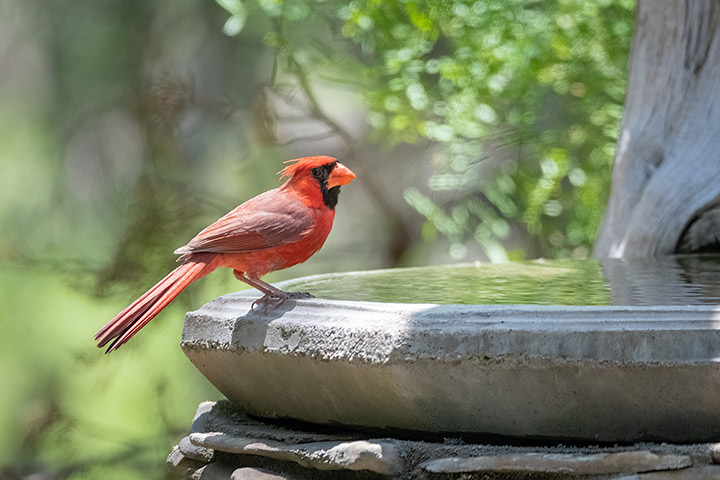
HOW TO HELP THE NORTHERN CARDINAL BIRD?
In addition to conservation efforts, there are also many ways that individuals can help support Northern Cardinals and other birds in their backyard. One way is to provide food and nesting sites for them. This can be done by putting up bird feeders and providing a variety of seeds and fruits, as well as nesting boxes and other shelters. Another way to help is to reduce or eliminate the use of pesticides and other chemicals in your yard. These chemicals can be harmful to birds and other wildlife and can also contaminate their food and water sources.
Another way to help Northern Cardinals is to make your yard more bird-friendly by planting native plants and trees. These provide not only food but also shelter and nesting sites. Native plants are adapted to the local climate and soil conditions, and they provide important food sources for birds, insects, and other wildlife.
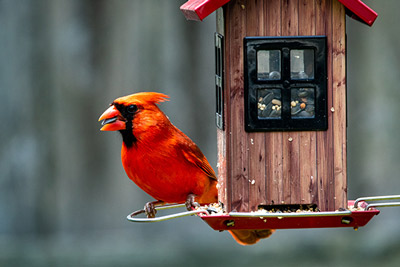
WINDOW COLLISION THREAT
Also, to minimize bird-window collisions, it is recommended to install window decals or hang bird-deterrents such as streamers or hawk silhouettes near windows. Also, during migration season, keeping your lights turned off at night will help reduce bird collisions.
In summary, The Northern Cardinal is a striking and beloved bird that plays an important role in the ecosystem and culture. However, human activities such as habitat destruction and pesticide use can have a negative impact on their populations. By protecting and restoring their habitats, providing food, and nesting sites, reducing the use of chemicals, and making our yards more bird-friendly, we can help to ensure the survival of this species for future generations to enjoy.

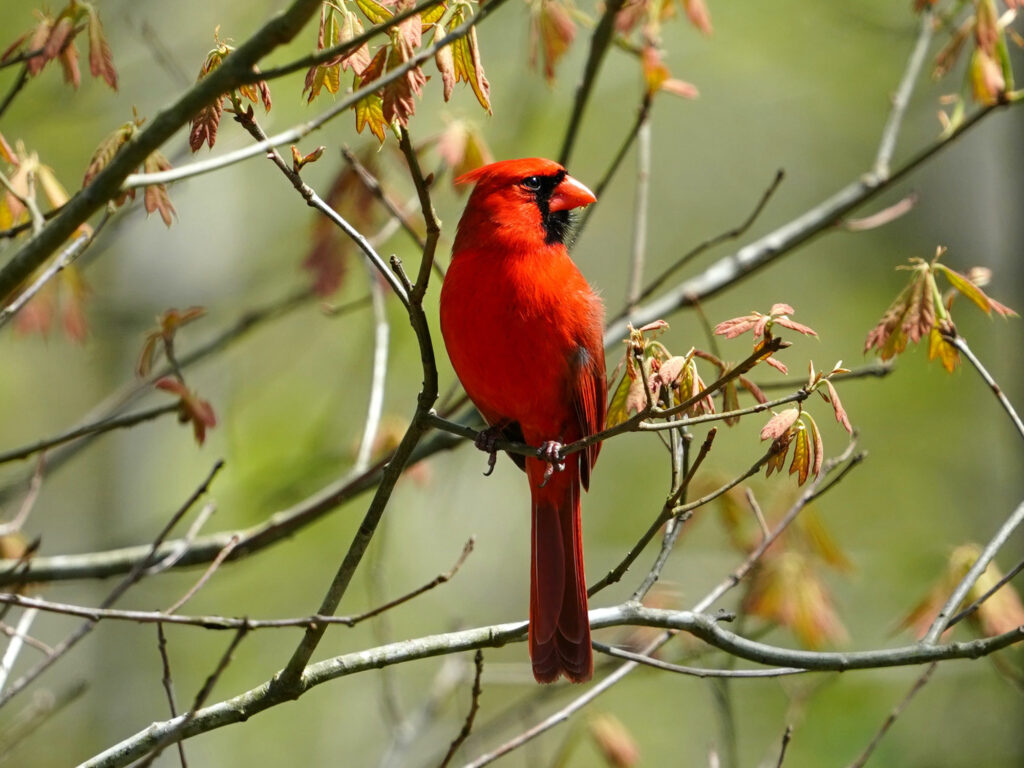
Thank you for your sharing. I am worried that I lack creative ideas. It is your article that makes me full of hope. Thank you.